In this first installment, of The Greatest Horological Inventions of All Time, we look at the pendulum clock, an invention largely taken for granted today, but one which led to virtually every horological advancement commonly known. It also had a profound ripple effect on how we live our lives, allowing human beings the ability the schedule events with a level of precision previously impossible.
From its invention in 1657 by Christiaan Huygens, inspired by the work of Galileo Galilei, until the 1930s, the pendulum clock was the world’s most precise timekeeper.

In 16th century London, only the very wealthy owned domestic clocks, watches and sundials. Inventories of their property suggest that most clocks and watches were imported from Germany, France and the Low Countries (see below). By about 1600 however, a small group of makers had become established in the City of London. King Henry VIII (1509 – 1547) and his successors encouraged foreign makers and mathematicians to settle in London and bring their skills with them.
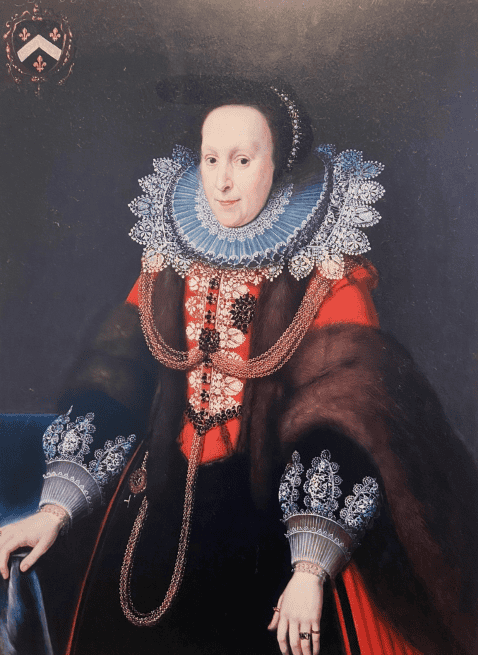
As the market for clocks and watches grew in London, more and more immigrant makers made their way to the city, particularly from France. However, until around the middle of the 17th century, it was more about what went on in the sky than about accurate timekeeping. The focus was upon the sun, moon, stars and signs of the zodiac which were deemed more important than the time of day (see below). Clocks and watches gained or lost between 15 to 30 minutes per day. Also, the only way to set the time was by using a sundial, not the most accurate way to tell the time.
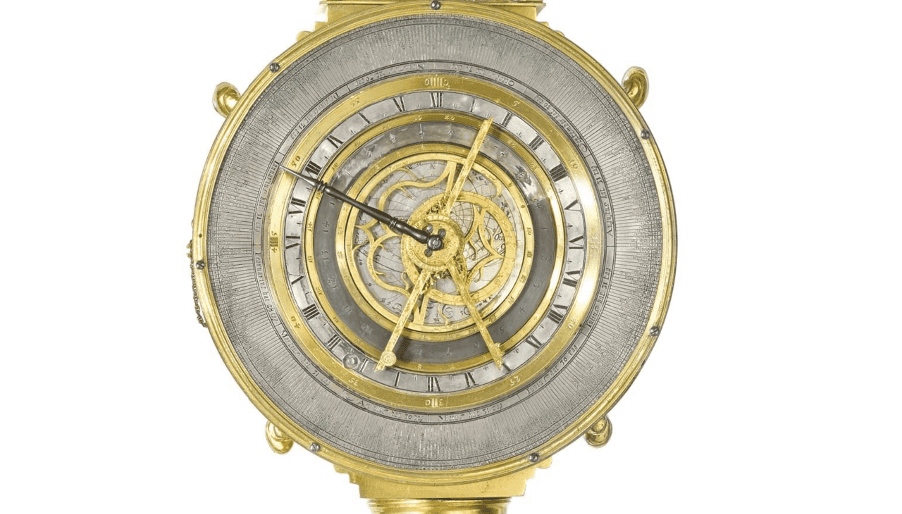
The Clockmakers’ Museum/Clarissa Bruce © The Clockmakers’ Charity
Until this time, clocks and watches only had one hand – an hour hand. Prior to the invention of the pendulum, lantern or house clocks generally ran for twelve hours duration and had a verge escapement with ‘foliot’ driven and adjusted by weights.

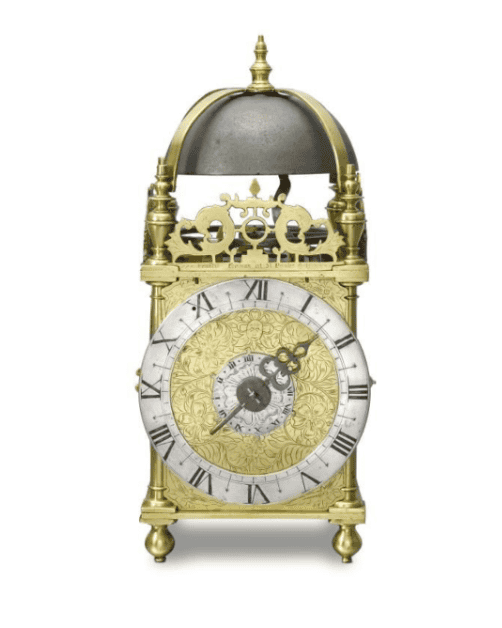
The Law of The Pendulum by Galileo Galilei
Italian mathematician, astronomer, physicist and inventor Galileo Galilei lived from 1564 to 1642. Galileo discovered the ‘isochronism of the pendulum,’ in other words, the ‘law of the pendulum’. He demonstrated that falling bodies of different weights descend at the same rate at the Tower of Pisa.
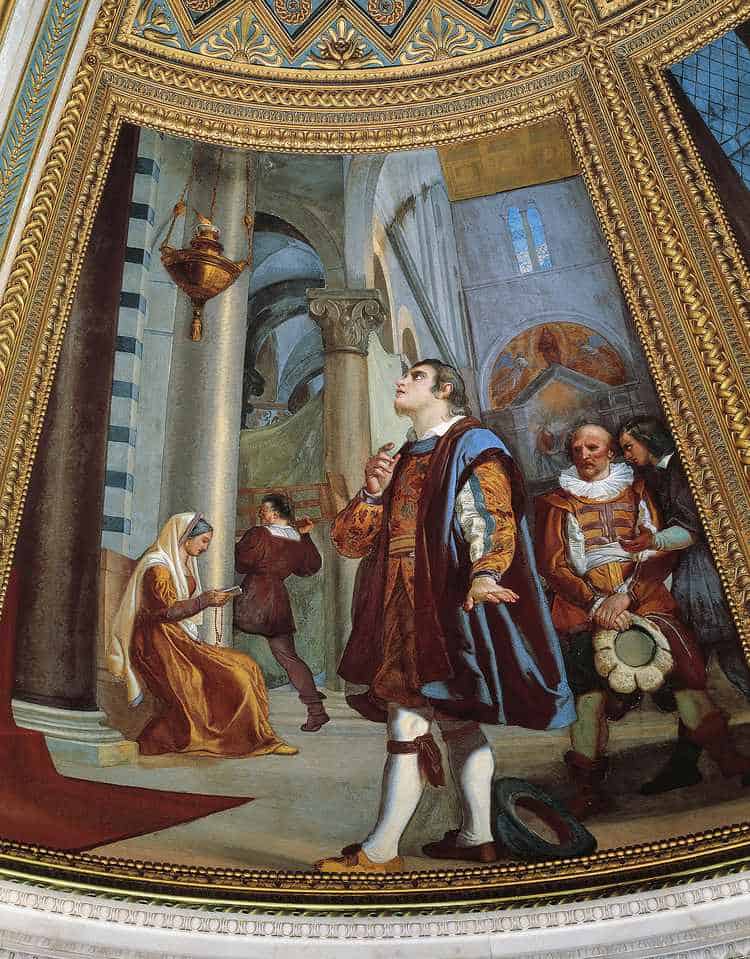
Much like Isaac Newton’s discovery of gravity by catching a falling apple, Galileo was reputed to have noticed the timekeeping properties of the pendulum in 1583, while watching a chandelier in Pisa Cathedral swinging in the wind. Although this popular story is most likely apocryphal, by the end of the 1580’s Galileo had begun to explore pendulum motion.
This clock is based on a 1659 drawing made by his pupil and biographer Vincenzo Viviani (1622-1703), which itself is based on Galileo’s ideas for a clock; a half-completed version of which was made after Galileo’s death in 1649 by his son Vincenzio. Galileo’s method of adapting a pendulum so that it both controlled a clock and was kept swinging by the clock was extremely ingenious. It was, however, flawed, as the clock interfered substantially with the pendulum’s natural swing. Galileo’s untimely death in 1642 cut short his attempts to apply it to clockwork.

Christiaan Huygens was one of the leading Dutch mathematicians and scientists of his day. His work included early telescopic studies of the rings of Saturn and establishing the wave theory of light. He also published major studies on mechanics and optics throughout his lifetime.
Christiaan was born into a prestigious Dutch family in The Hague on April 14th 1629. His parents were Constantin Huygens, a diplomat and adviser to the House of Orange, and Suzanna van Baerle. In May 1645 Christiaan travelled from The Hague to Leiden to study Mathematics and Law at the University, until he transferred to the newly founded College of Orange, in Breda in 1647.
By 1657 Huygens had not only designed a pendulum clock, but had commissioned an example from Solomon Coster, in the Hague. The improvement in timekeeping was dramatic. Within months, Ahasuerus Fromanteel, a London maker, arranged for his son John to enter Coster’s service. By May 1658, the Fromanteels were able to advertise pendulum clocks for sale in both Southwark and Lothbury. Excitement spread and other makers, such as Edward East, copied their work. Attempts were even made to use London pendulum clocks to find the longitude at sea.
“Much that I could add to this, I leave to the ingenuity of the manufacturers, who, once they have understood my invention, can easily find out how it can be applied to the different types of movements and also to those that have been made according to the old system.”
Christiaan Huygens
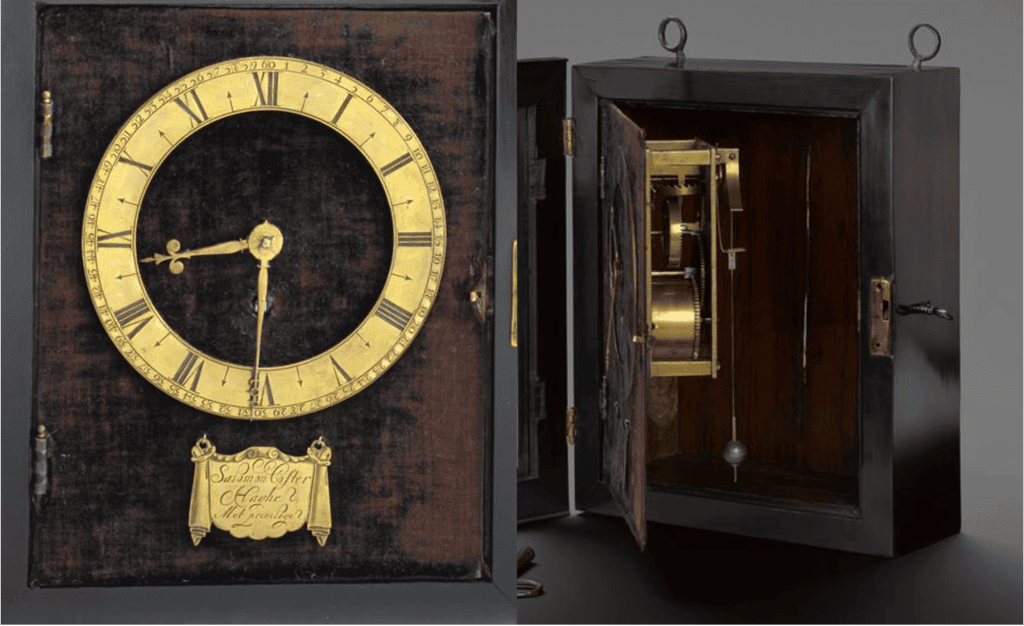
This clock by Salomon Coster (d. 1659) of The Hague is one of the earliest pendulum clocks ever made. Christiaan Huygens made the first successful pendulum clock in December 1656 and in the following year he granted Coster the sole right to make them. In effect Huygens had used a pendulum to control a conventional spring-driven clock with a verge escapement by turning it on its side and coupling the oscillating action produced by the verge to the pendulum. This resulted in the pendulum swinging through a wide arc and Huygens was aware that the pendulum was not completely isochronous, i.e. the clock would run slightly slower as the arc increased. He proposed to overcome this defect by fitting cheeks at the pendulum suspension point which would progressively reduce the effective length of the pendulum as the arc increased. All these features are present in the Coster clock.
Huygens published Horologium Oscillatorium: Sive de Motu Pendulorum ad Horologia Aptato Demonstrationes Geometricae (The Pendulum Clock: or Geometrical Demonstrations Concerning the Motion of Pendula as Applied to Clocks)in 1673. It included his major work about the invention of the pendulum.
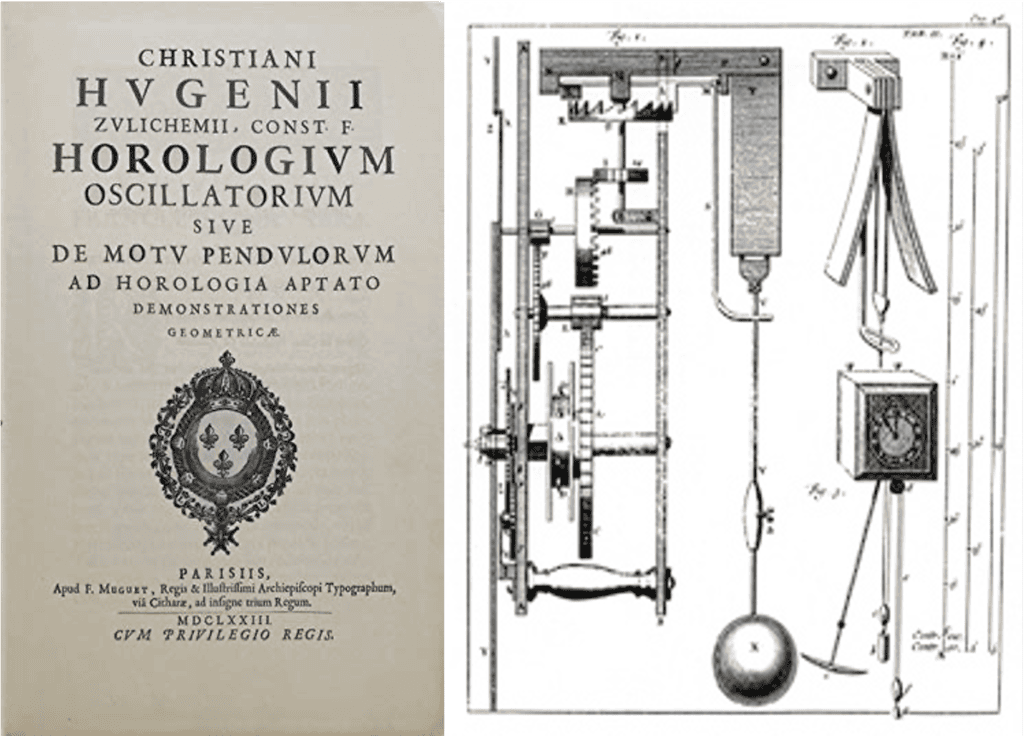
“The form I moulded in the shape of a cylinder lying oblong and with both ends pointed, such as is seen in the smaller diagram of the clock.”
Christiaan Huygens’ Horologium Oscillatorium
Positive Impact of the Pendulum
The impact on science was fundamental as accurate time measurement was crucial for scientific experiments. The pendulum clock allowed scientists to measure time intervals more precisely, aiding in experiments and observations. It also allowed the development of dynamics. Observations of the pendulum’s motion contributed to the study of dynamics and the development of Newtonian mechanics. Huygens’ work on the mathematical description of pendulum motion influenced the formulation of the laws of motion.
Moving forward, the principles of the pendulum were later adapted to other timekeeping devices, leading to more sophisticated and accurate clocks and watches. Pendulum mechanisms were also used in various devices to regulate and synchronise movements, contributing to advancements in engineering and technology.
There were also many cultural and social impacts of Huygen’s invention with the improved accuracy of clocks influencing daily life by providing a reliable way to schedule and coordinate activities, leading to more structured and efficient societal routines. Precise timekeeping was also essential for the coordination of work schedules, transportation, and communication, playing a crucial role in the Industrial Revolution and the modernisation of society.
The invention of the pendulum was a pivotal development in the history of science and technology. It revolutionised timekeeping, facilitated advancements in various scientific fields, contributed to technological innovations, and had far-reaching effects on daily life and societal structures. The pendulum’s impact is a testament to how a seemingly simple invention can drive progress and transformation across multiple domains.
The next feature in the series titled How The Invention of Balance Spring Changed the World is now available on Worn & Wound.

